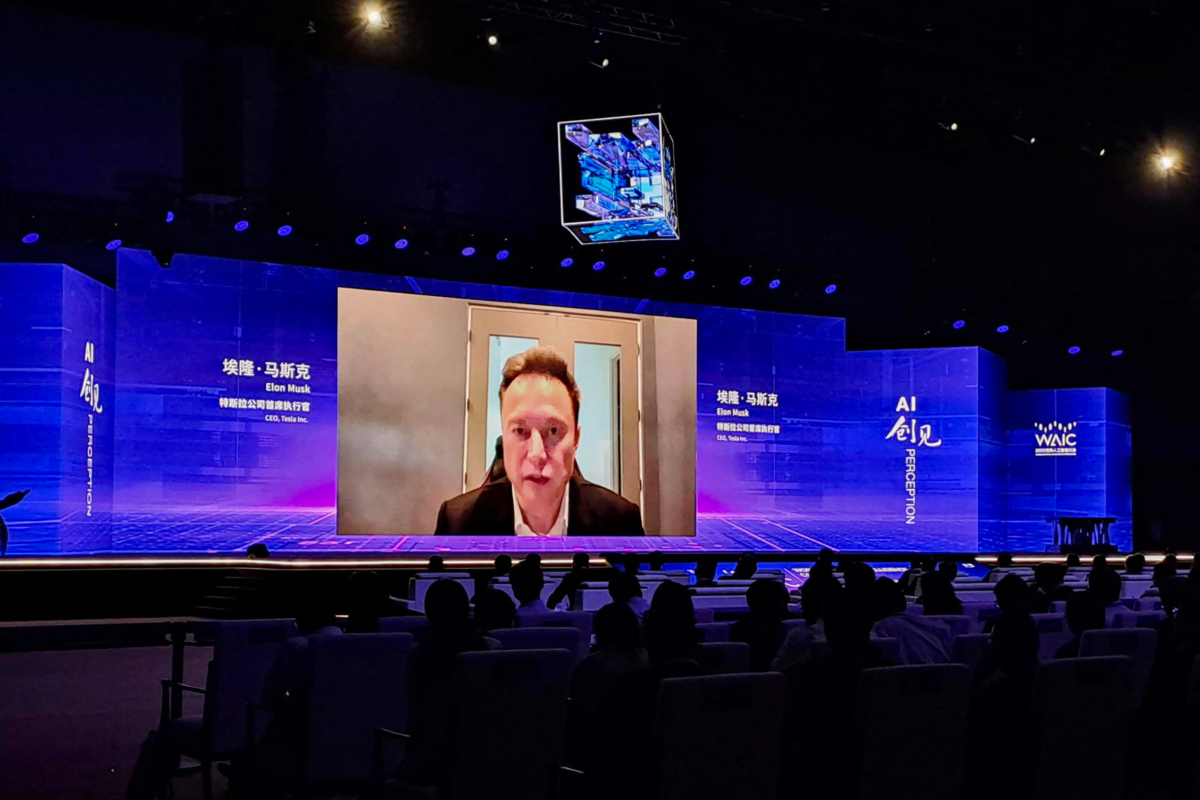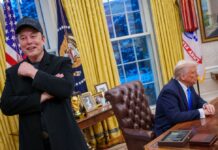Tesla CEO Elon Musk said the electric-vehicle maker is “very close” to achieving fully autonomous driving, predicting the advanced driving system will be ready this year.
“In terms of where Tesla is at this stage, I think we are very close to achieving full self-driving without human supervision,” Mr. Musk said via video link at the World Artificial Intelligence Conference (WAIC) in Shanghai, China, on July 6.
“This is only speculation, but I think we’ll achieve full self-driving—maybe what level you would call 4 or 5—I think later this year,” he said.
The billionaire admitted that he had been wrong in predicting the timeline regarding autonomous driving previously, but he added that he feels the automaker is “closer to it than we ever have been.”

Mr. Musk predicted that Tesla could achieve the two highest levels of self-driving technology, which requires no human intervention at all during the driving process. The SpaceX founder was referring to the U.S. Department of Transportation’s standard of driving automation as defined by the Society of Engineers (SAE).
The SAE defines the levels as:
- 0: A completely manual vehicle that is controlled by the person operating it.
- 1: The vehicle is equipped with cruise control to monitor speed but no other automated features.
- 2: A partially automated driving assistance system that can perform some tasks such as self-parking, braking, acceleration, or steering, but the driver is responsible for monitoring all tasks and must be prepared to intervene.
- 3: Conditional automated driving system vehicles are equipped with the capability to make decisions, such as self-parking, braking, acceleration, or steering, but it still requires the driver to remain alert to take over when a task cannot be completed.
- 4: High-driving automation allows the vehicle to intervene if something goes wrong or there is a system failure. In most cases, these cars do not require human interaction for the task of driving.
- 5: Full driving automation does not require human attention. Vehicles at this level will not be equipped with a steering wheel, acceleration pedal, or brake pedal. Fully autonomous cars would be able to go anywhere and do anything a driver can do. These vehicles are being tested in some areas of the world but are not yet available to consumers.
NHTSA Probe
Mr. Musk’s comment comes at a time when the National Highway Traffic Safety Administration (NHTSA) is investigating a series of accidents involving Tesla vehicles on autopilot colliding with parked emergency vehicles.
On July 6, U.S. auto safety regulators said that they are seeking updated responses and current data for the ongoing probe into the automaker’s autopilot system.
The NHTSA said in a letter to Tesla on July 3 that it is seeking updates to questions it had asked in August 2022 and is now demanding answers by July 19, according to a copy of the letter made public by the agency this week.
Tesla did not respond to a request for comment on the matter.
In addition to investigating the performance of Tesla’s autopilot, the agency also launched a probe into whether Tesla vehicles adequately ensure drivers are paying attention when using the driver assistance system.
Transportation Secretary Pete Buttigieg voiced concerns in May over how Tesla markets its technology, pointing out that the name of the software could be misleading.
“I don’t think that something should be called, for example, Autopilot, when the fine print says you need to have your hands on the wheel and eyes on the road at all times,” Mr. Buttigieg told The Associated Press in an interview in May.
Tesla’s autopilot enables vehicles to automatically steer, accelerate, and brake within their lane, while Enhanced Autopilot (EAP) can assist in changing lanes on highways. Tesla’s Full Self-Driving (FSD) feature enables vehicles to obey traffic signals and stop signs but does not make vehicles fully autonomous.
Since 2016, NHTSA has opened 40 Tesla special crash investigations where advanced driver assistance systems such as autopilot were suspected of being used with 20 crash deaths reported.
Reuters and Epoch Times reporter Jana J. Pruet contributed to this report.
From NTD News








